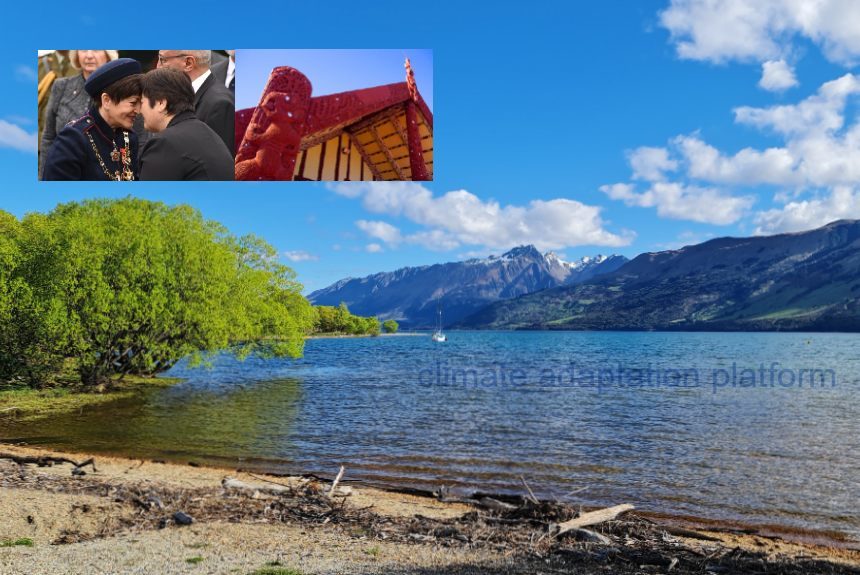New Zealand’s Ngā Pae o te Māramatanga (NPM) released the report, “He huringa āhuarangi, he huringa ao: A changing climate, a changing world” to investigate and explore climate change adaptation and mitigation solutions for Māori.
Produced by multidisciplinary Māori researchers from 11 universities and organisations, the climate change report summarises the latest research and guidance on observed and projected climate change impacts on whānau/hapū/iwi and Māori business in Aotearoa-NZ. It considers the implications of these impacts on diverse Māori interests and provides commentary about risk and uncertainty, knowledge gaps, and options for their climate adaptation and mitigation.
The report mentions that Māori wanted to assert their rights to manage climate change risks to protect their wellbeing. Still, there is a shortage of climate adaptation and mitigation guidance, as most existing guidance is aimed at central and local government agencies.
For Māori to make good and enduring decisions, they need a clearer understanding of climate change impacts and their implications for development and well-being.
Shaun Awatere, a senior researcher for Māori for Landscape Policy and Governance at Manaaki Whenua Landcare Research and project lead on the report, said that the creation of the study was prompted by the National Climate Change Risk Assessment Framework, released last year, and the gaps acknowledged in it. He said that a group of researchers decided to respond to that “challenge” and went about framing the issue of risk through a kaupapa Māori lens (Deguara, 2021).
The report compiles risk scores for the four domains of interest – Living Treasures, Māori Enterprise, Healthy People, and Māori Culture and Māori Values and Principles. According to the report, these key domains will be moderately impacted by 2050. By 2100, the risks to ecosystems will likely severely affect many aspects of Māori wellbeing. The authors write: “Climate change threatens not only the tangible components of Māori wellbeing, but also the spiritual components and, most importantly, the wellbeing of future generations” (Media Release, 2021).
Living Treasures (He Kura Taiao) refers to the freshwater, terrestrial, and coastal-marine ecosystems and biodiversity in Aotearoa-NZ. Proposed warming temperatures and changing precipitation patterns are likely to affect these ecological systems.
Vulnerable flora and fauna will face habitat loss and, in some cases, extinction. Any obstruction to accessing keystone species is expected to adversely impact Māori customary practice, cultural identity, social cohesion, and well-being.
The following are some topics mentioned in the report:
Māori Enterprise (Whakatipu Rawa)
Over 68% of Māori businesses are in the primary sector, with significant climate change impacts. Over 80% of Māori land is hilly to mountainous and susceptible to major erosion events such as landslides. Future-proofing the land is critical to withstand the effects of climate change. Māori will also soon own nearly 40% of commercial forestry plantations, which are vulnerable to climate extremes such as high-intensity storms, droughts, and wildfires.
More frequent and severe droughts, particularly across eastern and northern areas of the country, are likely to affect production yields and product quality in Māori forestry, farming and horticulture operations. Māori investments in the fisheries sector are also significant (Māori own 33% of quota by volume). Nearly half of these investments are in potentially at-risk species like pāua, kōura and hoki.
Healthy People (He Oranga Tāngata)
Māori will be disproportionately affected by climate-related health impacts. However, impacts will vary between communities and be influenced by geographic location, socio-economic status, existing health conditions, health system capability, and adaptation capacity. Direct impacts on health include increased exposure to potentially harmful weather events such as heat waves and floods. Indirect effects include reduced water availability and quality.”
Māori Culture and Practices (Ahurea Māori, Tikanga Māori)
Climate change can alter how Māori interact with the environment, each other, and other communities. Sea level rise and the consequent displacement will affect the transmission of the Māori language and culture. Some Māori infrastructure, such as marae and urupā, are located on exposed, low-lying, exposed, erosion-prone lands.
John Reid, a co-author of the study and senior research fellow from the University of Canterbury, says that although the report showed a gloomy future, it presented an opportunity to adapt, and there is still time to do it. He says that the report is intended to help provide iwi and hapu with a starting point for when they begin their adaptation planning and engage with local government and other authorities (Deguara, 2021).
You can read the full report by clicking on the button below:
Sources:
Awatere, S., King, D., Reid, J., Williams, L., Masters-Awatere, B., Jones, R., Eastwood, R., Harris, P., Pirker, J., Mataamua-Tapsell, N., & Jackson, A. (2021). He huringa āhuarangi, he huringa ao: A changing climate, a changing world. Report prepared for Nga Pae o te Māramatanga. Manaaki Whenua Landcare Research. Retrieved from http://www.maramatanga.ac.nz/sites/default/files/teArotahi_7_21-1910%20Climate%20Change_Awatere.pdf
Deguara, B. (2021, 22 October). Climate change impact on Māori wellbeing and culture ‘sobering’ yet ‘insightful’. Stuff. Retrieved from https://www.stuff.co.nz/pou-tiaki/126750843/climate-change-impact-on-mori-wellbeing-and-culture-sobering-yet-insightful
Media Release|Release of Te Ao Māori climate change report. (2021, 18 October). Ngā Pae o te Māramatanga, New Zealand’s Māori Centre of Research Excellence. Retrieved from https://www.maramatanga.ac.nz/Media-Release-He-Huringa-Ahuarangi
Future-Proofing Māori Development Opportunities: Huringa Rangi Huringa Oranga. (2018, February 2). Ngā Pae o te Māramatanga. https://www.maramatanga.ac.nz/project/future-proofing-m-ori-development-opportunities-huringa-rangi-huringa-oranga
IMAGE CREDITS:
- By Governor General of New Zealand – gg.govt.nz, CC BY 4.0, https://commons.wikimedia.org/w/index.php?curid=62119187
- By Photograph by James Shook, who retains copyright and releases the image under the license shown below. – from en.wikipedia [1] 22:36, 18 October 2005 . . JShook (Talk) . . 993×660 (378346 bytes), CC BY 2.5, https://commons.wikimedia.org/w/index.php?curid=4319607



Leave a Reply